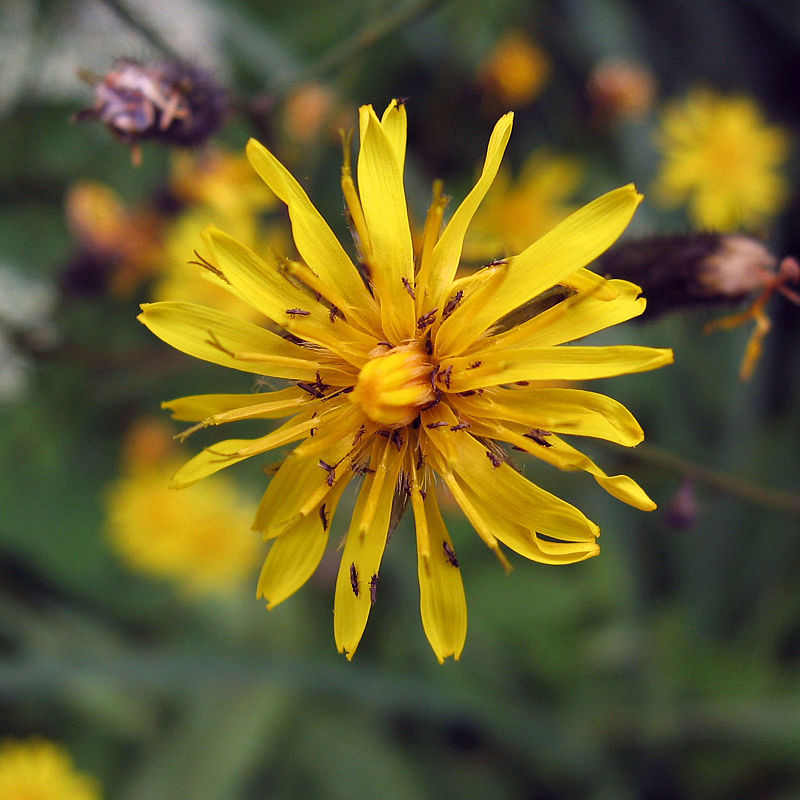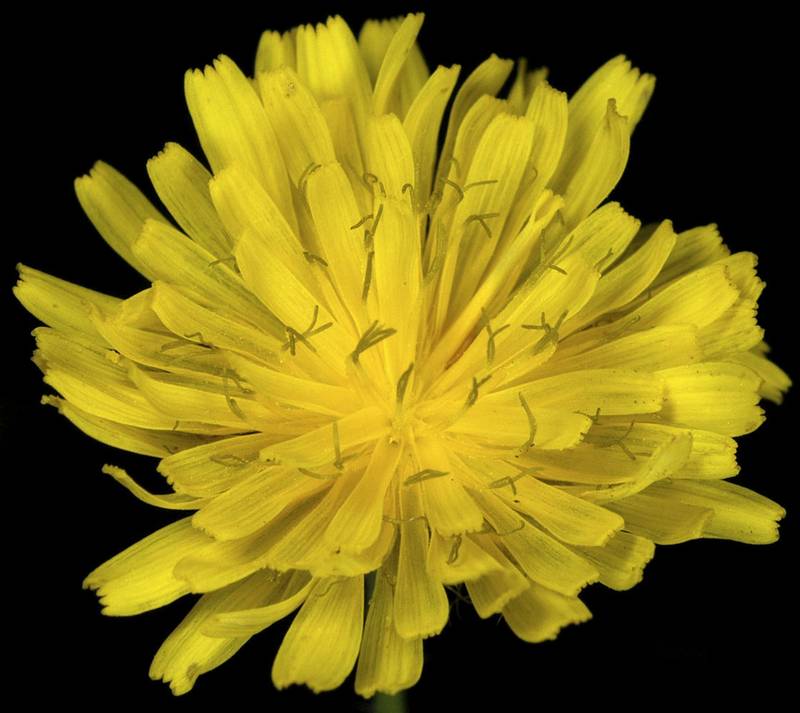Crepis tectorum
Crepis setosa
annual hawksbeard, narrow leaf hawksbeard, rooftop hawksbeard
bristly hawksbeard, rough hawksbeard
Basal leaves petiolate, the blade lanceolate or oblanceolate, finely toothed to pinnately parted, up to 15 cm. long and 4 cm. wide; reduced cauline leaves sessile and auriculate, linear, often involute.
Leaves alternate, the basal petiolate, the blades oblanceolate to lyrate, 5-30 cm. long and 1-8 cm. wide, the margins dentate to pinnately lobed;
cauline leaves lanceolate, the bases saggitate, the margins dentate or laciniate.
Heads several to numerous, 30-70 flowered;
involucre 6-9 mm. high, its inner bracts 12-15, with fine hairs and sometimes with stalked glands as well, the outer bracts about one-third as long;
corollas all ligulate, yellow.
Inflorescence a panicle with 10-20 heads;
involucral bracts 12-16, 6-7 mm. long, strongly keeled and thickened, covered with coarse bristles, the margins green to yellowish, the tips acuminate, with 10-14 linear bractlets 2-4 mm. long;
flowers 10-20, the corollas yellow, strap-shaped, 8-10 mm. long;
pappus white, fine and soft.
Achenes 2.5-4.5 mm. long, dark reddish-brown, spindle-shaped, with 10 ribs.
Achene reddish-brown, spindle-shaped, 3-5 mm. long, beaked.
Crepis tectorum
Crepis setosa
- Local floras:
BC,
CA,
OR,
WA
- Local Web sites:
CalFlora,
CalPhotos,
Flora NW,
PNW Herbaria
WildflowerSearch
iNaturalist (observations)
USDA Plants Database
- LBJ Wildflower Center
- SEINet
- Plants of the World Online
- Encyclopedia of Life
- Wikipedia
- Google Image Search
- Local floras:
BC,
CA,
OR,
WA
- Local Web sites:
CalFlora,
CalPhotos,
Flora NW,
PNW Herbaria
WildflowerSearch
iNaturalist (observations)
USDA Plants Database
- LBJ Wildflower Center
- SEINet
- Plants of the World Online
- Encyclopedia of Life
- Wikipedia
- Google Image Search



